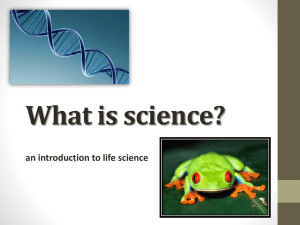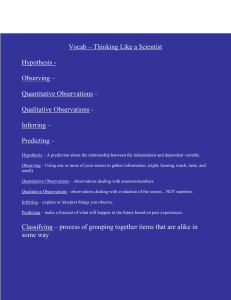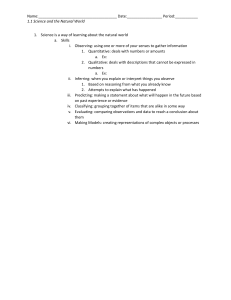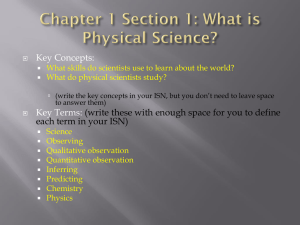What is Physical Science?
advertisement
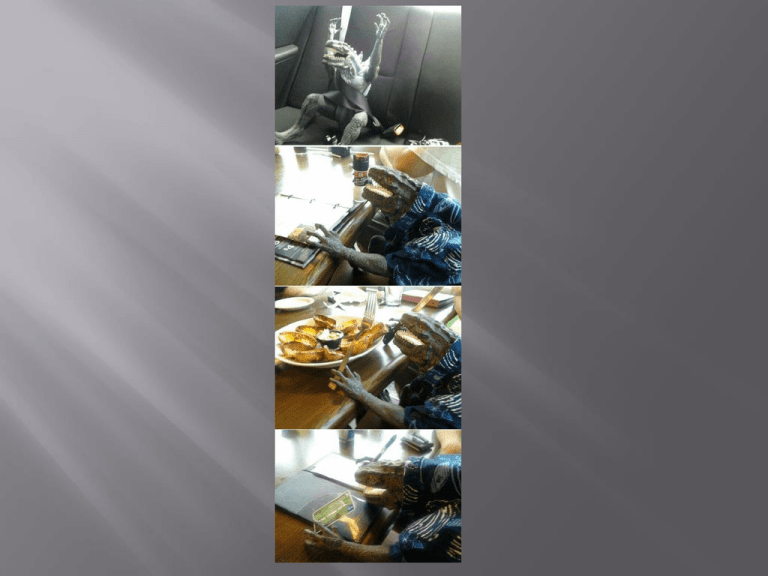
Key Concepts: What skills do scientists use to learn about the world? What do physical scientists study? (write the key concepts in your ISN, but you don’t need to leave space to answer them) Key Terms: (write these with enough space for you to define each term in your ISN) Science Observing Qualitative observation Quantitative observation Inferring Predicting Chemistry Physics Your textbook defines it as “a way of learning about the natural world by gathering information.” This is your first definition. What does science look like? How to scientists do “science”? Scientists use the skills of observing, inferring and predicting to learn more about the natural world. Some (but not all) of the skills used by scientists are: Observing Qualitative vs. Quantitative observations Using your senses to obtain data Inferring Creating a possible explanation for something observed Predicting Making a “forecast” of what will happen in the future based on past evidence Deals with descriptions Data observed but not measured Colors, textures, smells, tastes, appearance, etc Deals with numbers Data can be measured Length, height, area, volume, weight, speed, time, temp., humidity, cost, ages, etc. A large(ish) painting Blue colors with swirls Texture shows brush strokes 29in x 36in Weighs 8.5 pounds Approx.125 years old Robust aroma Brown liquid Strong taste Cup is white • • • • 12 ounces 100 degrees Cup is 7 inches in height Cost 4.95 What qualitative observations can we make? What color are the cabinets? Is the room big or small? Do most of the students have dark hair or light hair or dark eyes or light eyes? What quantitative observations can we make? How many cabinets are there? What are the dimensions (width x length) of the room? (area of a rectangle) How many windows are there? For each image, write Your description of the image 1 observation (could be qualitative or quantitative, but they will probably be qualitative for these particular slides) 1 inference 1 prediction of what will come next (has to be based on what you have observed and inferred. Predictions need to be useful and related to the information you have.) Physical science is the study of matter, energy, and the changes they undergo. The two main areas are: Chemistry is the study of the properties of matter and how matter changes. Physics is the study of matter and energy and how they interact. Where do we see physical science? Think: how do the following people use some knowledge of physical science to complete their jobs? Photographers Piano tuners Firefighters You need to be able to define the key terms You need to understand observing, inferring, predicting Do you know how observations are made? Do you know what an inference is? Can you make good predictions when given information? You need to know the difference between qualitative and quantitative observations You need to know the two main branches of physical science: physics and chemistry What is using your senses to gather information called? How can you tell the difference between a qualitative and a quantitative observation? What are inferences based on? What can they lead to? What are the two main branches of physical science? Go over these ideas at home! With your friends! While brushing your teeth! Between Bieber concerts!
